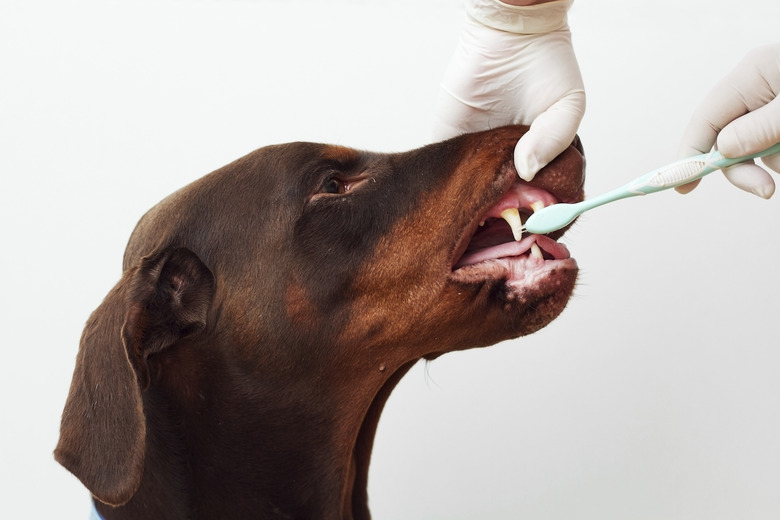How Often Should You Brush Your Dog's Teeth?
Veterinarians recommend daily tooth brushing for your best friend, and not just because his breath may stink. Brushing can prevent tooth loss, as well as the tartar buildup and gingivitis that often advance to periodontal disease and dental abscesses. These infections can spread through the dog's system to his heart, kidneys and liver, and can kill your pet. While it's easier to teach puppies to accept brushing, your long-in-the-tooth dog's good taste can entice him to participate, too.
Make His Mouth Water
Make His Mouth Water
Choose a pet toothbrush designed for your dog's size. Because dogs love snacks and are strongly driven by food, they can be cajoled into opening their choppers for a toothbrush loaded with doggy toothpaste in flavors such as beef, poultry, malt or mint. Use only pet toothpaste, as human products contain fluoride, which is toxic to dogs. Your buddy is more likely to cooperate if you use a paste flavor that he likes. Doggie toothpaste is safe for Buster to swallow, so you don't have to worry about rinsing.
Licking His Chops
Licking His Chops
Smear a dab of toothpaste on the brush and offer it up to Buster to sample. If he likes the taste, you're in business. Gently brush the outer surfaces of all the teeth, where nearly all the tartar occurs, ideally building up over time to about 40 to 60 seconds in total. As soon as you remove the brush from his mouth, the dog will lick his teeth and spread the paste over the inner surfaces, essentially brushing those himself. Follow up with a special treat to celebrate his accomplishment.
Always check with your veterinarian before changing your pet's diet, medication, or physical activity routines. This information is not a substitute for a vet's opinion.
